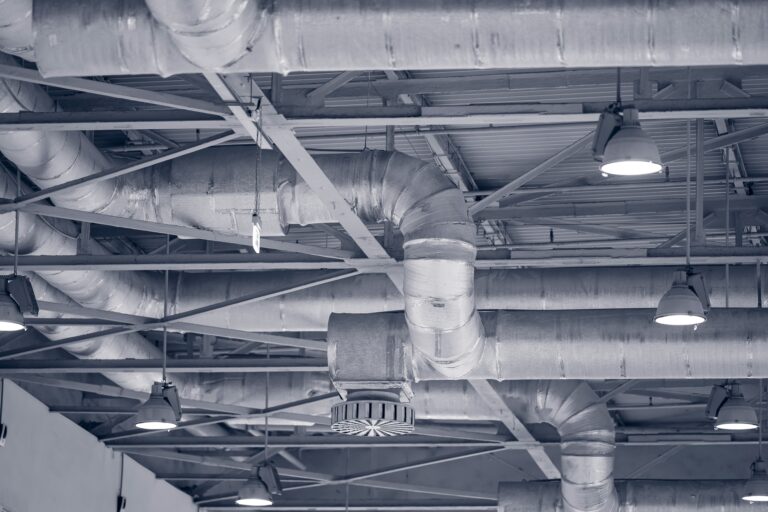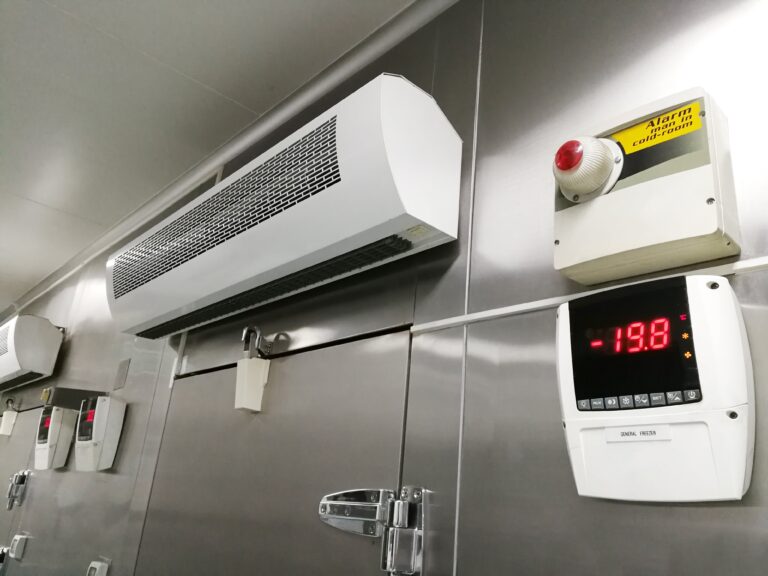To make this measure more effective and tailored to the specific context of your company, we recommend that you first perform an overall analysis of your energy situation.
Installation or replacement of a centralised refrigerating system
Cold production is used to cool down a room or a component, preserve food products, control the temperature of a process or ensure proper air conditioning.
Installing a centralised refrigeration unit generally offers better efficiency than a decentralised installation, reduces noise and heat disturbance in occupied rooms and frees up space in the cooled area, as the equipment is installed in a dedicated room.
However, this solution requires a higher investment and the involvement of a qualified refrigeration technician. Below are all the necessary steps to prepare for the installation of a centralised refrigeration system.
Definition of cold production requirement
Analysis of the current situation
- Determine the condition of the existing installation (if one is already in place), for example: age, load level, general condition, temperature level, energy consumption and associated costs, etc.
- Assess the energy consumption of the production unit(s) as well as the peripheral components of the installation.
- Monitor performance indicators and identify any malfunctions. (e.g. pressure and temperature curves)
Assessment of the building’s cooling requirements by a qualified craftsman or an engineering office
- Analyse the company’s current energy situation
- To go further:
- Evaluate needs through a cooling load calculationAnalyse the power requirements at the consumption points
- Analyse and reassess the technical characteristics of the installation, such as temperature level and nominal output
- Check the technical limitations of the existing unit(s)
- Check whether it is possible to optimise the existing installation. See measure Optimising the cold production system
- Identify a location for installing a new centralised cooling unit
Identification of a centralised cold production solution suited to the company’s needs
Elements of the solution
Define the scope of the requirements, for example:
- Replacement of the main production unit
- Modernisation of the cooling towers
- Replacement of the entire cooling installation
- Adaptation of the distribution network
- Insulation
- Control system
- Integration of an adiabatic cooling system
- etc.
Further information:
Using waste heat
In principle, cooling is generated by electric compressors. This process releases a high percentage of the energy in the form of waste heat. This heat can be repurposed for other energy needs, such as domestic hot water production, heating of production halls, material drying, etc.
Feasibility check of the project
- Based on the requirements analysis, define the scope and the solution, in collaboration with an engineering office or a qualified craftsman
- Draft the specifications and requests for tenders
- Applying for operating permits In case of modifications to existing installations, and especially when installing new equipment, verify the validity of existing operating permits.
State subsidy application
State subsidies
Attention: incentive effect to be complied with when applying for subsidies (state or otherwise) and subject to meeting the eligibility conditions.
To respect the ‘incentive effect’, no binding commitment (such as signing a quote or paying a deposit) may be made BEFORE submitting the subsidy application or receiving the agreement in principle from the State or the electricity and natural gas supplier following an application for aid.
- Aid for small and medium-sized companies, covering up to 70% of eligible costs for carrying out a project aimed at reducing their environmental impact. The total project cost must be between €3.000 and €25.000 excluding VAT.
- Points de contact :
- Chambre des Métiers for craft companies (Chamber of Skilled Trades and Crafts)
- Chamber of Commerce for companies in the non-craft sectors
- SME aid scheme – Aid for consultancy services
Aid for small or medium-sized enterprises, up to 50% of the fees of external consultants for consultancy services.
- Verification of project eligibility and granting body: Directorate-General Industry, New Technologies and Research
- Points of contact:
- House of Entrepreneurship of the Chamber of Commerce
- Points of contact:
- SME aid scheme – Aid for miscellaneous investments
Aid for small and medium-sized enterprises, up to 10% or 20% of the amount of miscellaneous investments aimed at promoting the modernisation and competitiveness of the Luxembourg economy.
- Verification of company eligibility and costs: Directorate-General Industry, New Technologies and Research
- For questions:
- House of Entrepreneurship of the Chamber of Commerce
- For questions:
N.B. State subsidies cannot be combined for the same project.
Application for subsidies from electricity and natural gas suppliers
Since 2015, natural gas and electricity suppliers have been required to achieve energy savings for consumers under the obligation scheme. Since then, energy suppliers have been offering support and advice, as well as subsidy programmes to help consumers implement energy efficiency measures.
The following suppliers offer this service for companies:
N.B. Supplier subsidies can be combined with any state subsidies for the same project.

